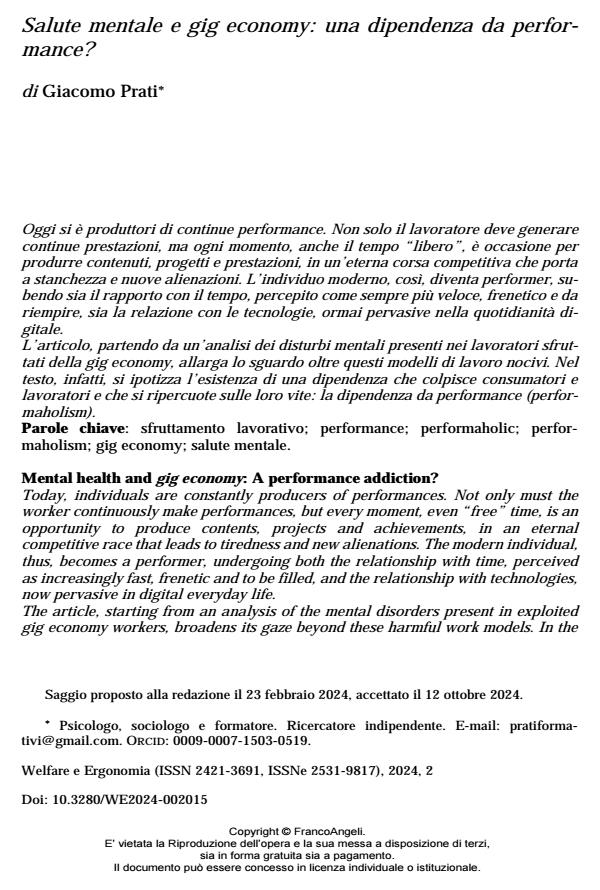Mental health and gig economy: A performance addiction?
Journal title WELFARE E ERGONOMIA
Author/s Giacomo Prati
Publishing Year 2025 Issue 2024/2
Language Italian Pages 12 P. 229-240 File size 78 KB
DOI 10.3280/WE2024-002015
DOI is like a bar code for intellectual property: to have more infomation
click here
Below, you can see the article first page
If you want to buy this article in PDF format, you can do it, following the instructions to buy download credits

FrancoAngeli is member of Publishers International Linking Association, Inc (PILA), a not-for-profit association which run the CrossRef service enabling links to and from online scholarly content.
Today, individuals are constantly producers of performances. Not only must the worker continuously make performances, but every moment, even “free” time, is an opportunity to produce contents, projects and achievements, in an eternal competitive race that leads to tiredness and new alienations. The modern individual, thus, becomes a performer, undergoing both the relationship with time, perceived as increasingly fast, frenetic and to be filled, and the relationship with technologies, now pervasive in digital everyday life. The article, starting from an analysis of the mental disorders present in exploited gig economy workers, broadens its gaze beyond these harmful work models. In the text, the existence of a performance addiction (performaholism) affecting consumers and workers is hypothesized, impacting their lives.
Keywords: work exploitation; performance; performaholic; performaholism; gig economy; mental health.
Giacomo Prati, Salute mentale e gig economy: una dipendenza da performance? in "WELFARE E ERGONOMIA" 2/2024, pp 229-240, DOI: 10.3280/WE2024-002015